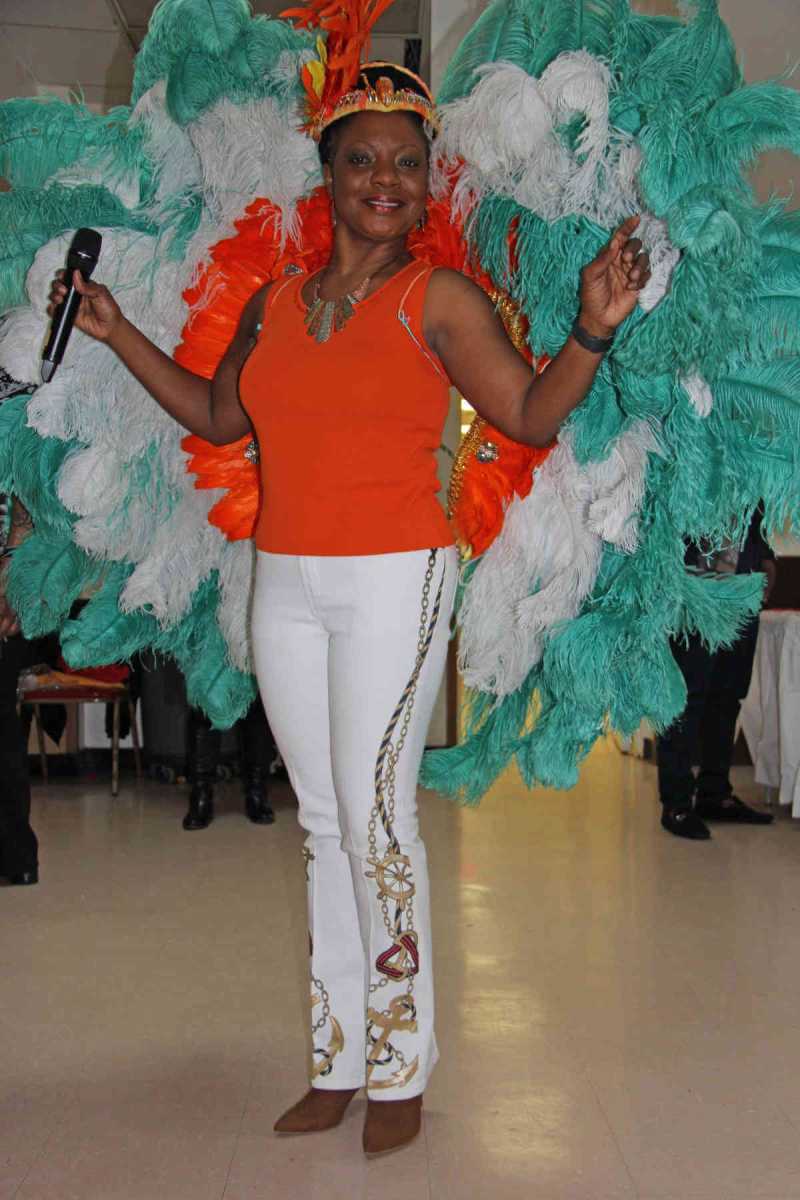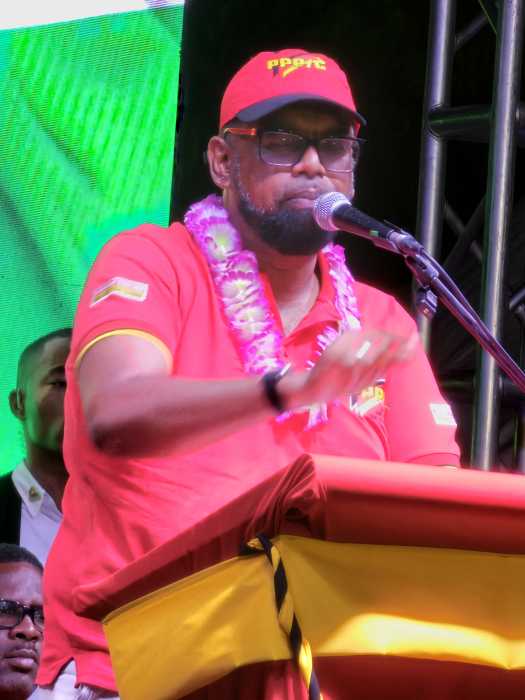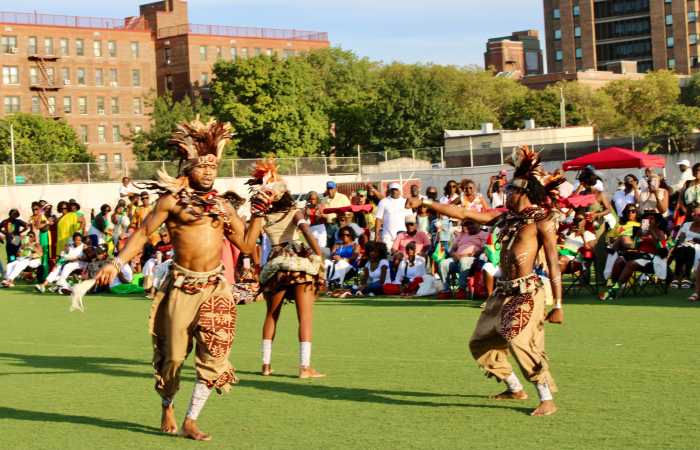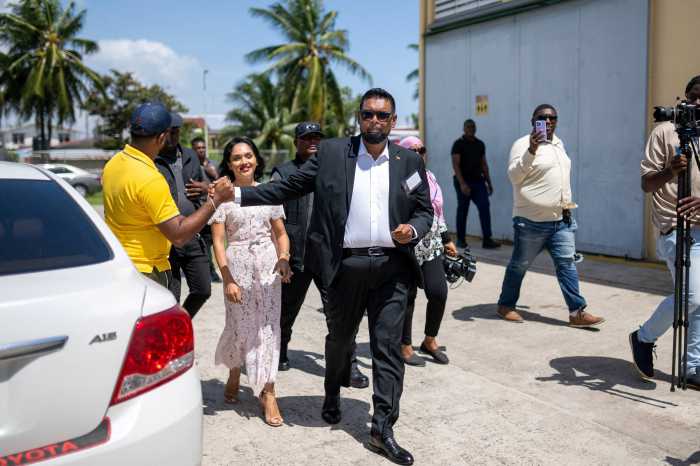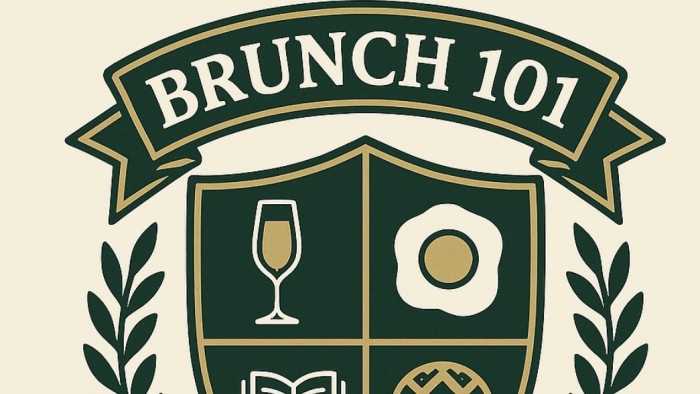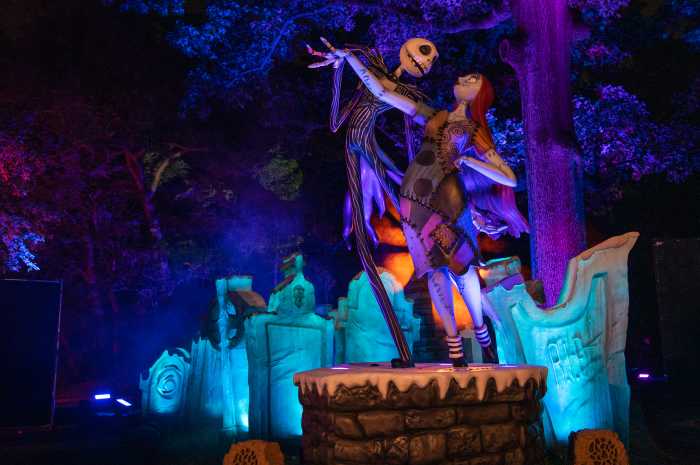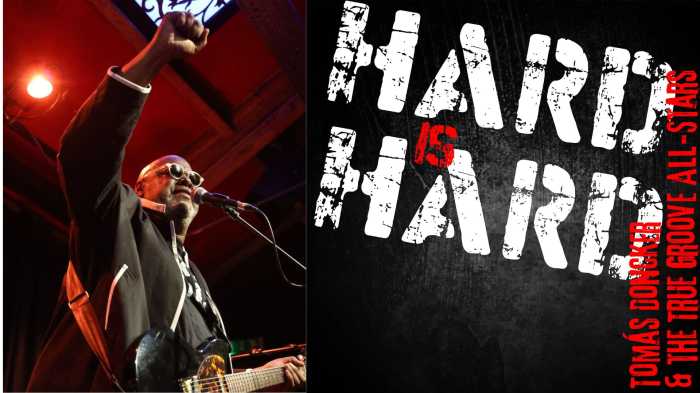With the display of spectacular costumes, the Brooklyn-based Guyana Cultural Association of New York, Inc. (GCANY) Saturday night in Brooklyn launched the jubilee celebration of Mashramani at St. Gabriel’s Golden Hall on Hawthorne Street.
Mashramani, often abbreviated to “Mash,” is an annual festival that celebrates Guyana becoming a Republic in 1970.
The festival, usually held on Feb. 23 – Guyanese Republic Day – includes a parade, music, games and cooking, and is intended to commemorate the “Birth of the Republic.”
In 2016, the Mashramani parade was held on May 26, the 50th anniversary of Guyana’s independence, but the remainder of the celebration was held on the traditional February date.
But Dr. Vibert Cambridge, GCANY president, who skyped in from Ohio, at Saturday’s launch in Brooklyn, said Mashramani actually dates back to 50 years.
“This 50-year old annual event is a national institution,” he said. “It has been and will continue to be a sensitive barometer on the state of Guyanese society.
“Over its 50 years, Mashramani has been the locus where the dialectics of political ideology, state aesthetics and recreation have played out,” he added. “Its history is an important strand in Guyana’s post-colonial experience.”
Cambridge said Mashramani, as a national festival, is an example of “a community-based idea taking root and blossoming into something that is organic and nationally significant.
“This development is to me as significant as the post-emancipation village movement, in terms of agency and efficacy,” he said.
From the first Mashramani, organized by the Jaycees of McKenzie and held in McKenzie (now Linden) in Guyana, in 1970, to the present, Cambridge said the festival arts “have held pride of place in the festival.”
During Saturday’s night launch in Brooklyn, GCANY members masqueraded in colorful costumes, dancing to pulsating soca music.
“Over the past 50 years, the annual Mashramani season has experienced and overcome a divisive political discourse,” Claire Goring, GCANY cultural director, told Caribbean Life. “Despite that stressful discourse, the Mashramani idea – celebration after a hard/tough collaborative effort – has remained alive.
“This jubilee celebration is moment to reflect, refresh and replenish,” she added.
GCANY is also celebrating its 19th anniversary.
Cambridge said Guyana’s Mashramani season is “an attractive and increasingly organic tourism product,” stating that “the key job is making the enabling environment more supportive for participation in this season and beyond. It calls for systems alignment.
“For us, Mashramani at 50 calls for a year of celebrations – a year to recognize and celebrate our designers and their supporters who integrate (costumes, floats, choreography, animation, music, lights, etc.) – the festival arts – to realize imagination and create spectacle for the delight of spectators,” he said.
“For us, 2020 is a year to begin a process to create a more enabling environment for Guyanese festival artists,” he added. “This one that is rooted in the curriculum of national art school and engages an all-of-society approach to practice.
“We have been working at it for the past three years,” Cambridge disclosed. “We called it the ‘Celebrating the Festival Arts’ project.”
He said the high point will be the celebrations of the festival arts during Folk Festival 2020 and Eastern Parkway.
During 2020 Folk Festival, Cambridge said each signature event will be “an opportunity to isolate and showcase a specific element of the festival arts – a light show, and clean audio mix, costuming.”
“We are very proud to be part of the efforts to encourage the preservation and celebration of masquerade, a quintessential Guyanese art,” Cambridge said.
Goring said GCANY appreciated the support it received Saturday night from its friends and supporters, “who came out to celebrate the launch of Mashramani@50 with us.”
“It was also a time to update them about our 2020 Guyana Folk Festival season, which will continue to celebrate our festival arts,” she said.




